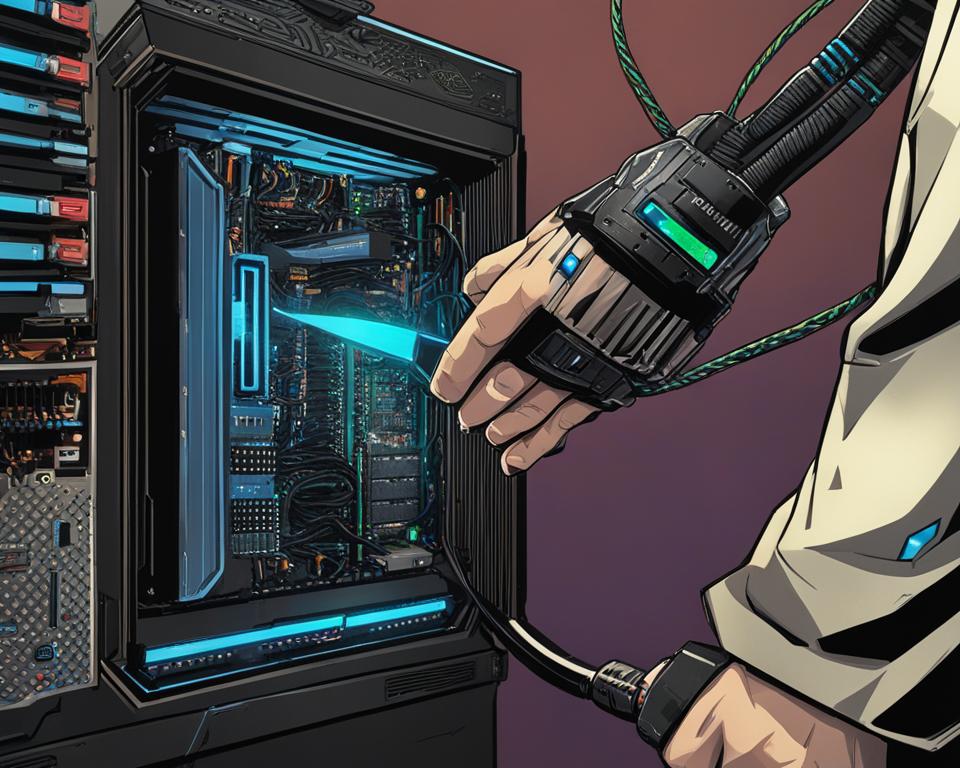Are you struggling to connect your monitor to your motherboard using HDMI? It can be frustrating when your monitor isn’t detecting the HDMI connection, leaving you unable to enjoy the benefits of multiple display devices. But don’t worry, we’ve got you covered! In this step-by-step tutorial, we’ll guide you through the process of connecting your monitor to the motherboard HDMI port and troubleshooting any issues that may arise. Whether you’re a tech-savvy enthusiast or a beginner, you’ll find all the information you need to successfully establish a reliable HDMI connection.
Let’s start with a relatable story. Meet David, an avid gamer and a freelance graphic designer. David recently upgraded his computer with a powerful graphics card to enhance his gaming and design experience. However, he soon realized that his new graphics card only had one HDMI port, which meant he couldn’t connect his second monitor for multitasking. Frustrated, David started looking for a solution to his problem.
After some research, David discovered that his motherboard had an HDMI port that he could utilize. Excited about the prospect of connecting his second monitor, he followed a step-by-step guide to enable the motherboard HDMI and connect his additional display device. To his delight, the monitor was successfully detected, and he could now enjoy the benefits of dual monitors for enhanced productivity and immersive gaming sessions.
Key Takeaways:
- Connecting your monitor to the motherboard HDMI port can be a solution when your graphics card has limited HDMI ports.
- Before enabling the motherboard HDMI, check if your CPU has integrated graphics.
- Access the BIOS settings to enable the integrated graphics and multiple display settings.
- Connect the primary monitor to the graphics card’s HDMI port and the secondary monitor to the motherboard HDMI port.
- Update the integrated graphics driver to ensure proper detection of the secondary monitor.
Checking for Integrated Graphics in your CPU
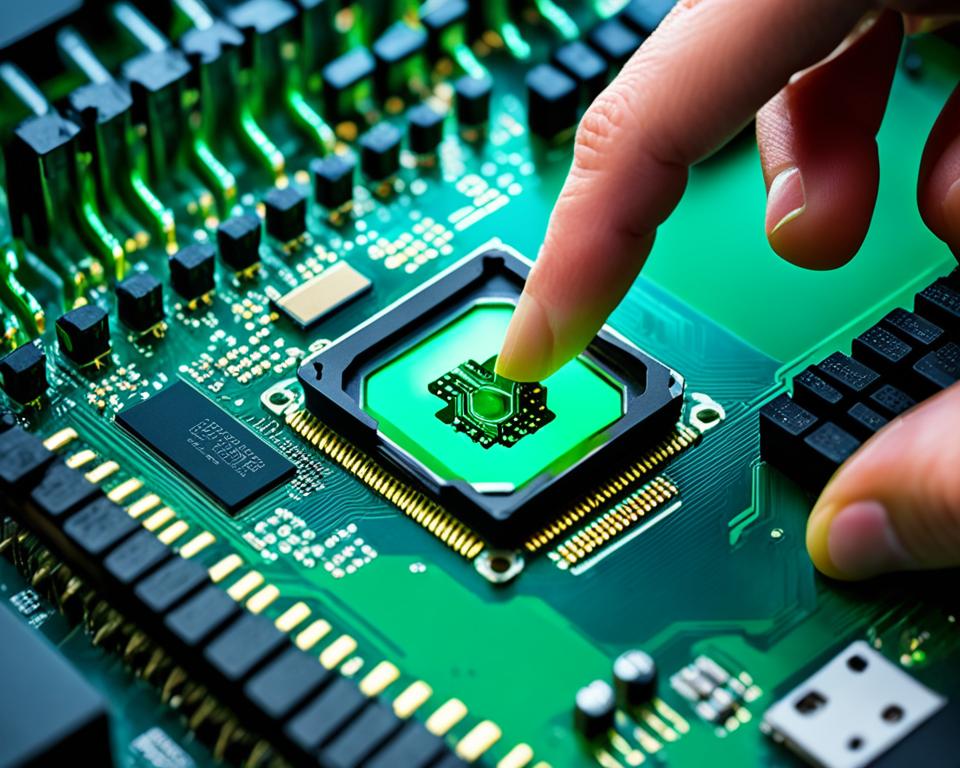
Before enabling motherboard HDMI, it is important to check if your CPU has integrated graphics. The HDMI port on your motherboard does not run from the GPU, but rather from the integrated graphics. There are multiple methods to confirm this:
- Access the Device Manager and check the Display Adapter menu to see if your CPU has integrated graphics.
- Find the processor model and search online for information. Open Settings, select System, click on About, and find the processor model. Alternatively, right-click on My Computer or This PC and select Properties to see the processor model. Using the model name, search on Google to determine if it has integrated graphics.
By confirming the presence of integrated graphics in your CPU, you can proceed with enabling the motherboard HDMI to connect secondary display devices.
Enabling Integrated Graphics in BIOS
Once you have confirmed that your CPU has integrated graphics, the next step is to enable it in the BIOS. Restart your PC and press one of the keys mentioned in your motherboard’s manual. It could be F1, F2, F8, F12, Escape, or Delete. This will open the BIOS settings.
Inside the BIOS, locate the Advanced tab or section. Look for the IGPU and Multiple Display settings. Make sure that these settings are enabled. Enabling them will activate your motherboard’s HDMI, allowing you to connect multiple display devices.
After enabling the IGPU and Multiple Display settings, save the changes and restart your computer. This will activate the new settings and allow you to utilize the integrated graphics capabilities of your CPU.
Connecting to Your New Monitor
After enabling your motherboard HDMI, you can connect the monitor to the HDMI port. Here’s a step-by-step guide:
- Plug in the primary monitor to the HDMI port located on the back of the video card.
- Plug in the secondary monitor to the motherboard HDMI.
- Connect the other end of the HDMI cables to the respective monitors.
- After making the connections, your PC will automatically detect the two monitors.
Now it’s time to configure the display settings. Right-click anywhere on the desktop screen of your primary monitor and select Display Settings. This will open a window where you can adjust the settings related to the monitors.
Monitor Setup Example:
| Monitor | Connection |
|---|---|
| Primary Monitor | HDMI Port on Video Card |
| Secondary Monitor | Motherboard HDMI Port |
To optimize your viewing experience, you can arrange the monitors according to your desired setup. For example, you can choose to extend your desktop across both monitors or use one as the main display and the other as an extended display.
With your monitors connected and the display settings configured, you’re ready to enjoy the benefits of a dual monitor setup. Whether you’re working on multiple projects, watching videos, or gaming, the extra screen real estate will enhance your productivity and overall computing experience.
Installing the Integrated Graphics Driver to Its Latest Version
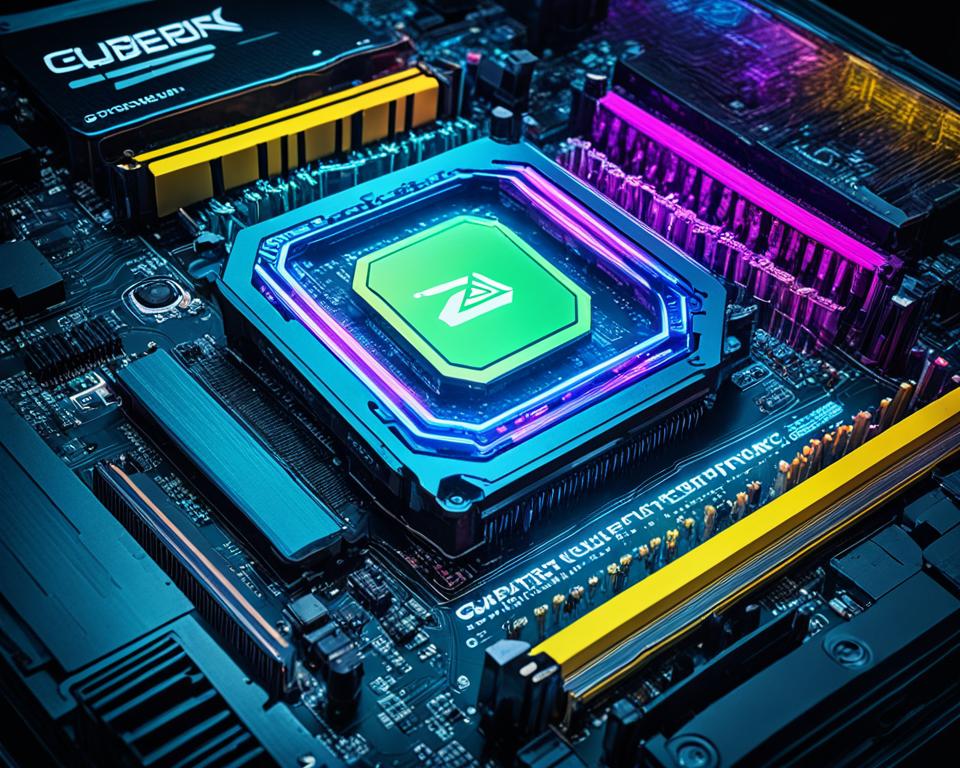
In some cases, the secondary monitor may not be detected even after enabling the motherboard HDMI and configuring the display settings correctly. This can be due to the driver for the onboard graphics not installed or outdated. To resolve this, follow the steps below:
- Search for Device Manager in the Windows search bar and open it.
- Under the Other Devices section, look for an unidentified device.
- Visit your CPU manufacturer’s website and download the latest drivers for your CPU model.
- Alternatively, you can let your PC search for the latest driver or use the Check for Updates feature in Windows.
- Install the driver by following the on-screen instructions.
- After restarting your computer, the secondary monitor should be detected.
Updating the integrated graphics driver ensures compatibility and optimal performance, enabling your secondary monitor to be detected and function properly.
Influence on Performance of Dedicated and Integrated Graphics
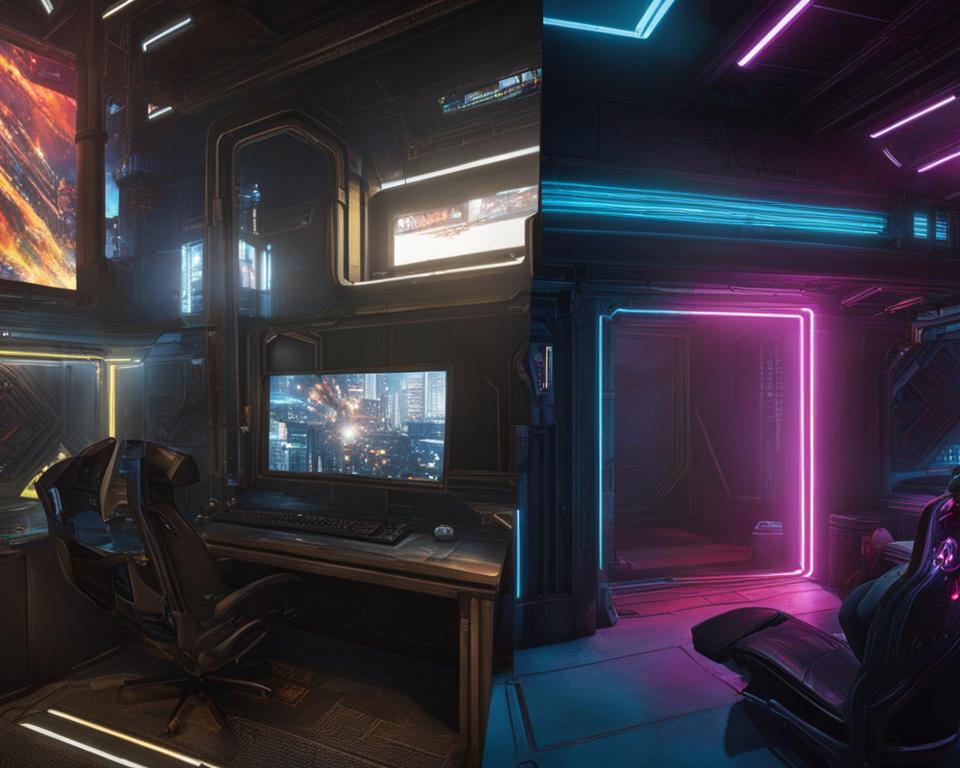
If you don’t have any free ports on your dedicated graphics card, you can utilize the motherboard HDMI port to connect an extra device. An integrated graphics solution uses a lot of power and memory with the GPU to view information. This produces a burden on the CPU and system memory, which can lead to high latency in APIC Timer interrupt transmissions.
The dedicated GPU can easily access image data using discrete graphics cards with memory, while embedded graphics cannot extract the image data as they do not have reliable memory collection. However, they use the device’s memory to extract the image data. If you unplug the secondary monitor while playing a game, it will increase the FPS (Frames per Second), as the onboard graphics will enter sleep mode. You can plug the monitor back after your gaming session.
Advantages of Dedicated Graphics:
- Enhanced graphics performance
- Ability to handle demanding tasks such as gaming, video editing, and graphic design
- Access to dedicated GPU memory for faster processing
Advantages of Integrated Graphics:
- Utilizes existing CPU power and memory
- Cost-effective solution
- Can handle everyday tasks and light gaming
“Dedicated graphics cards offer superior performance for graphic-intensive tasks, while integrated graphics provide a more cost-effective option for everyday computing needs.” – [Author Name]
Advantages of Using Motherboard HDMI
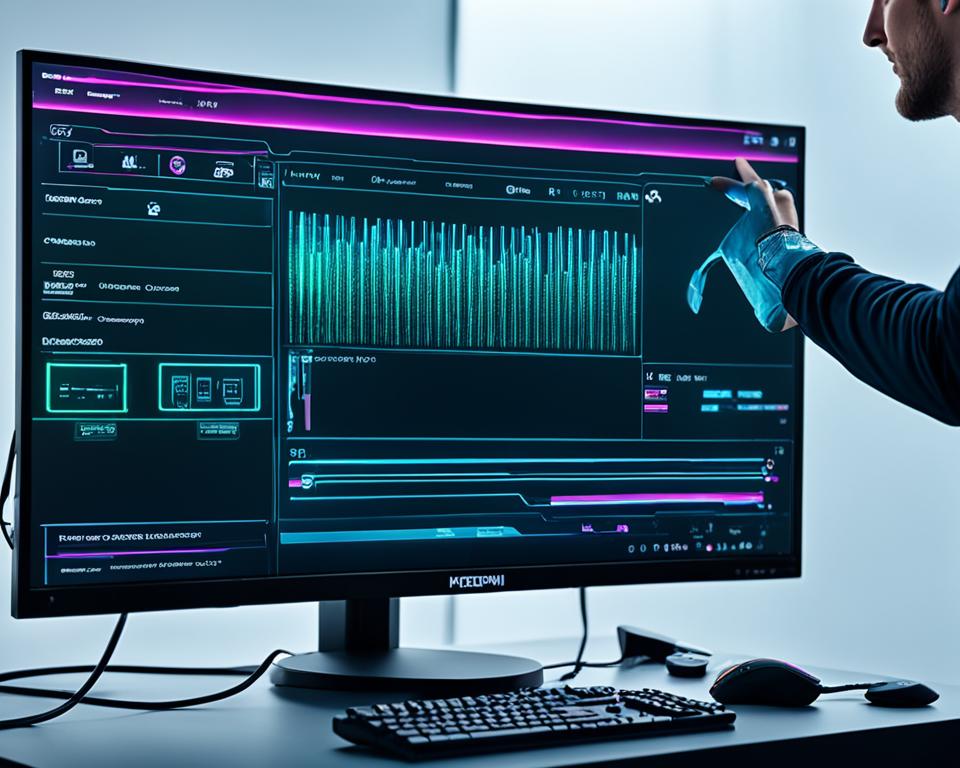
The most obvious benefit of using motherboard HDMI is the ability to connect multiple display devices. If your graphics card does not have a second HDMI port or if both ports are used, the motherboard HDMI comes in handy for connecting another monitor.
Using a second monitor can significantly enhance work efficiency and productivity. With dual monitors, you can easily multitask by having different applications and windows open on each screen. This allows for seamless workflow and quicker access to information, resulting in improved productivity.
When it comes to gaming, a second monitor connected through motherboard HDMI can greatly enhance your gaming performance. You can use one monitor for the game interface while utilizing the other monitor to monitor hardware and RAM usage, chat with fellow gamers, or browse gaming tips and tricks. Having important information readily available on a separate screen ensures a better gaming experience and empowers you to make real-time adjustments for optimal gameplay.
“Using a second monitor can vastly improve your work efficiency and productivity, allowing you to multitask seamlessly.” – Tech Enthusiast
Additionally, connecting multiple graphics cards in your setup can further boost gaming performance. By utilizing the motherboard HDMI in conjunction with dedicated graphics cards, you can achieve better frame rates and smoother gameplay. This configuration allows each graphics card to handle the processing load independently, resulting in enhanced graphic rendering capabilities.
Advantages of Using Motherboard HDMI:
- Connect multiple display devices
- Increase work efficiency and productivity
- Enhance gaming performance
- Utilize dual monitors for multitasking
- Monitor hardware and RAM usage while gaming
- Improve frame rates and graphic rendering with multiple graphics cards
Overall, leveraging the advantages of using motherboard HDMI opens up a world of possibilities for multiple display setups in both professional and gaming environments. With the ability to connect multiple monitors, you can optimize your work efficiency, boost productivity, and elevate your gaming experience to new heights.
Drawbacks of Using Motherboard HDMI
While using the motherboard HDMI to connect a monitor has its benefits, there are also some drawbacks to consider. One significant drawback is that you will not be able to play multi-monitor games. The motherboard HDMI can only support a single display device, which limits your ability to enjoy the full gaming experience with multiple monitors.
Furthermore, if you are a gamer or use high-end 3D software, relying solely on the motherboard HDMI for your display needs may not provide optimal gaming performance. Integrated graphics, which are utilized when using the motherboard HDMI, do not offer the same level of performance as dedicated graphics cards.
If you are in need of multiple displays or require enhanced gaming performance, it may be more suitable to invest in a motherboard that supports multiple graphics cards. With a motherboard that supports multiple graphics cards, you have the ability to use dedicated GPUs for each monitor, providing better performance and a more immersive gaming experience.
Comparison: Motherboard HDMI vs. Multiple Graphics Cards
The following table provides a comparison of using the motherboard HDMI and multiple graphics cards for display purposes:
Aspect Motherboard HDMI Multiple Graphics Cards Multi-Monitor Support Only supports a single display device Supports multiple monitors for an immersive experience Gaming Performance Limited performance due to integrated graphics Enhanced performance with dedicated graphics cards Suitable For Basic display needs, non-gaming tasks Gaming, graphic-intensive tasks
It is important to consider your specific requirements and use cases when deciding whether to use the motherboard HDMI or invest in multiple graphics cards. Assessing your needs will help you make an informed decision that aligns with your desired display capabilities and gaming performance.
Solution: Multiple Graphics Cards and High-Performance Motherboards
If you prioritize multi-monitor support and gaming performance, opting for a motherboard that supports multiple graphics cards is the ideal solution. When selecting a high-performance motherboard, ensure that it offers the necessary power supply and connectivity options for multiple graphics cards.
Before making a purchase, refer to the technical specifications of the motherboard, which can be found on the manufacturer’s website or the product packaging. Look for the HDMI port specifications, noting whether it supports input or output, and check for compatibility with multiple graphics cards.
By choosing a motherboard that supports multiple graphics cards, you can take advantage of the higher gaming performance offered by dedicated GPUs and enjoy the immersive experience of gaming with multiple monitors.
Understanding the Basics: The Differences between Motherboard HDMI and GPU HDMI
When it comes to understanding the basics of motherboard HDMI and GPU HDMI, it is crucial to grasp the key differences between the two. Motherboard HDMI refers to the HDMI port integrated into your computer’s motherboard, which relies on the integrated graphics capabilities of the CPU for graphics processing. On the other hand, GPU HDMI refers to the HDMI port on a dedicated graphics card, harnessing the power of a dedicated GPU for enhanced graphics performance.
Motherboard HDMI primarily caters to everyday tasks, providing sufficient graphics processing capabilities for regular computer usage. It is suitable for browsing the web, watching videos, and performing general office tasks. However, its performance may be limited when it comes to graphically intensive applications such as gaming, video editing, and graphic design.
In contrast, GPU HDMI offers superior graphics processing capabilities due to the dedicated graphics card’s specialized hardware. This makes it ideal for demanding tasks that require smooth graphics rendering, such as gaming, video editing, and graphic design. The dedicated GPU can handle complex visual effects, high resolutions, and multiple displays efficiently, delivering impressive performance.
While motherboard HDMI is more cost-effective and sufficient for most users’ needs, GPU HDMI provides the necessary power and performance for those requiring advanced graphics processing capabilities. The choice between motherboard HDMI and GPU HDMI depends on individual requirements, with budget, usage patterns, and desired performance levels influencing the decision.
Comparison: Motherboard HDMI vs. GPU HDMI
| Aspect | Motherboard HDMI | GPU HDMI |
|---|---|---|
| Graphics Processing | Relies on integrated graphics capabilities of CPU | Harnesses dedicated GPU for enhanced performance |
| Performance | Suitable for everyday tasks; limited graphics capabilities | Ideal for gaming, video editing, and graphic design; superior graphics processing |
| Cost | More cost-effective | Higher cost due to dedicated graphics card |
| Usage | Regular computer tasks, web browsing, office applications | Gaming, video editing, graphic design, high-resolution displays, multiple displays |
Understanding the differences between motherboard HDMI and GPU HDMI allows you to make an informed decision based on your specific needs and usage requirements. Whether you prioritize cost-effectiveness for everyday tasks or require advanced graphics processing capabilities for gaming or other demanding applications, both options offer distinct advantages. Evaluate your requirements and budget to choose the option that best suits your needs.
How to Connect and Use Motherboard HDMI
Connecting and using the motherboard HDMI is a straightforward process that allows you to utilize the integrated graphics capabilities of your computer. To connect, you will need the following equipment:
- A computer tower
- A monitor or display with an HDMI input
- An HDMI cable
Follow this step-by-step guide to connect and use the motherboard HDMI:
- Shut down your computer.
- Locate the HDMI port on the motherboard. It is usually located on the back of the tower and is labeled “HDMI”.
- Connect one end of the HDMI cable to the HDMI port on the motherboard.
- Connect the other end of the HDMI cable to the HDMI input on your monitor or display.
- Power on your computer and your monitor or display.
- If necessary, configure the display settings by right-clicking anywhere on the desktop and selecting “Display Settings”. From there, you can adjust the resolution, orientation, and other display settings to your preference.
Once you have completed these steps, your monitor or display should be receiving the video output from the integrated graphics of your motherboard. You can now enjoy using your computer with an additional display device.
How to Connect and Use GPU HDMI
Connecting and using GPU HDMI is the key to unlocking the full potential of your dedicated graphics card for an unparalleled graphics performance. To get started, you will need a computer tower, a monitor or display with an HDMI input, and an HDMI cable. Follow these simple steps to make the connection:
1. Shut down your computer: Before making any connections, it’s important to completely shut down your computer to avoid any potential damage.
2. Locate the HDMI port on the graphics card: In your computer tower, identify the dedicated graphics card and find the HDMI port on it. This port is specifically designed for high-quality audio and video transmission.
3. Connect the HDMI cable: Take one end of the HDMI cable and securely plug it into the HDMI port on the graphics card. Ensure a snug fit to avoid any loose connections.
4. Connect the other end to the display: Take the other end of the HDMI cable and connect it to the HDMI input on your monitor or display. Make sure it is firmly inserted to maintain a stable connection.
5. Power on your computer and display: Once the connections are in place, power on your computer and then turn on your monitor or display. This will allow your computer to recognize the new display device.
6. Configure the display settings if necessary: Depending on your preferences and the capabilities of your graphics card, you may need to configure the display settings. This can be done through the graphics card control panel or the display settings menu in your operating system.
By following these steps, you can effectively connect and use GPU HDMI to unleash the power of your dedicated graphics card. Whether you’re a gamer, a video editor, or someone who requires high-performance graphics, GPU HDMI is the ideal solution for all your graphically demanding tasks.

